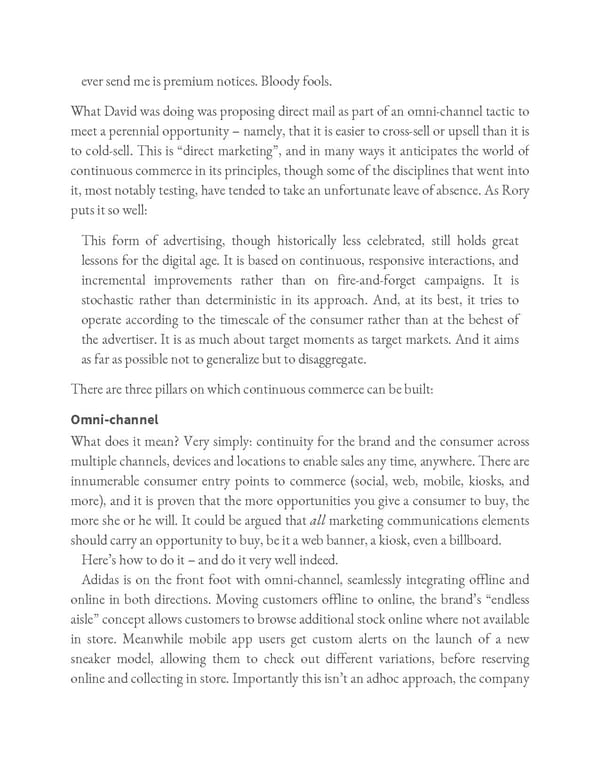ever send me is premium notices. Bloody fools. What David was doing was proposing direct mail as part of an omni-channel tactic to meet a perennial opportunity – namely, that it is easier to cross-sell or upsell than it is to cold-sell. This is “direct marketing”, and in many ways it anticipates the world of continuous commerce in its principles, though some of the disciplines that went into it, most notably testing, have tended to take an unfortunate leave of absence. As Rory puts it so well: This form of advertising, though historically less celebrated, still holds great lessons for the digital age. It is based on continuous, responsive interactions, and incremental improvements rather than on fire-and-forget campaigns. It is stochastic rather than deterministic in its approach. And, at its best, it tries to operate according to the timescale of the consumer rather than at the behest of the advertiser. It is as much about target moments as target markets. And it aims as far as possible not to generalize but to disaggregate. There are three pillars on which continuous commerce can be built: Omni-channel What does it mean? Very simply: continuity for the brand and the consumer across multiple channels, devices and locations to enable sales any time, anywhere. There are innumerable consumer entry points to commerce (social, web, mobile, kiosks, and more), and it is proven that the more opportunities you give a consumer to buy, the more she or he will. It could be argued that all marketing communications elements should carry an opportunity to buy, be it a web banner, a kiosk, even a billboard. Here’s how to do it – and do it very well indeed. Adidas is on the front foot with omni-channel, seamlessly integrating offline and online in both directions. Moving customers offline to online, the brand’s “endless aisle” concept allows customers to browse additional stock online where not available in store. Meanwhile mobile app users get custom alerts on the launch of a new sneaker model, allowing them to check out different variations, before reserving online and collecting in store. Importantly this isn’t an adhoc approach, the company
 Ogilvy on Advertising in the Digital Age Page 313 Page 315
Ogilvy on Advertising in the Digital Age Page 313 Page 315